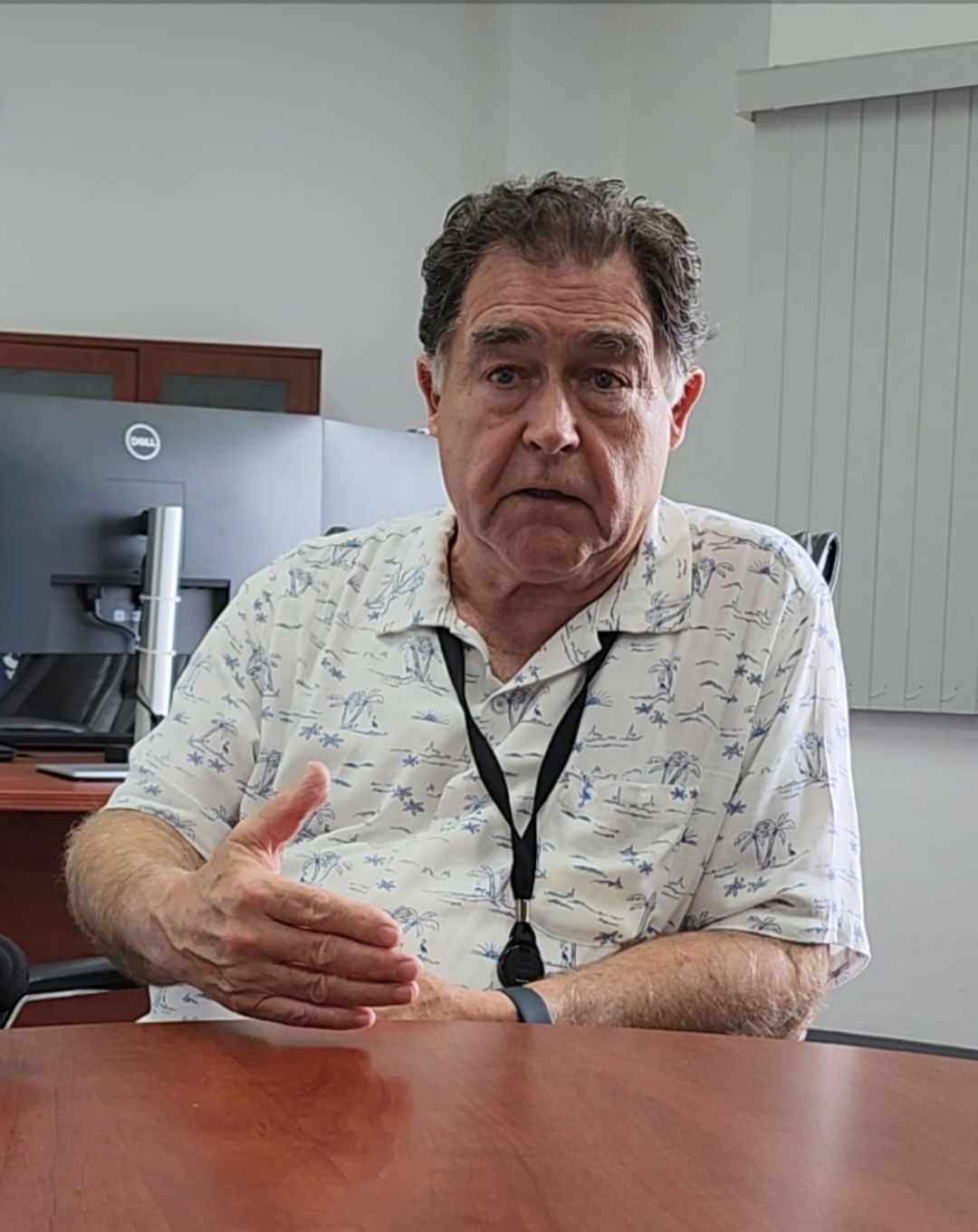
CUC Executive Director Kevin Watson gestures as he talks to reporters at his office on Thursday, July 18, 2024.
TO reduce rates, the Commonwealth Utilities Corporation is going forward with the construction of a 20-megawatt solar farm, CUC Executive Director Kevin Watson said.
“The public land near the Saipan international airport has been identified and acquired. We are going forward,” he added.
“This week we are putting out the Request for Proposals for design,” he told reporters during an interview at his CUC office on Thursday afternoon, July 18.
He said he and his team looked at the solar farm on Guam last week to get themselves acquainted with the project.
“Guam Power Authority did a private and public partnership, which is a very financially good business decision on their part because they did not have to put any funding forward…so, if we can get the design and look into a private and public partnership with our CNMI solar farm that would help resolve several challenges. Because solar farms take expertise to not only build and design, but to operate as well,” Watson said.
“The way Guam set it up, [they have] a 20-year agreement with their main consultant and another sub-consultant who has a three-year contract to do the operations. Their customers benefit from that because the fluctuations in diesel oil [prices] do not affect them. Guam has [a] 60-megawatt solar farm, which [provides] about a third of their power generation,” he added.
“When we get the 20-megawatt solar farm here, it will help us keep our rates stable for power or [provide] our customers here [with] a lower reduced rate for power,” he said.
Watson said it took Guam five years “from conception to actually producing power — I think that timeline would be comfortable.”
He added, “Guam’s solar farm was in a…different situation because the consultant also had to purchase the land, while we already have. The land [has been] identified and acquired, now we just need to do the design and construction and operating.”
Watson said CUC needs the support of private customers and businesses to ensure the success of its solar farm project whose estimated cost is between $60 million and $100 million.
“If we go with the private and public partnership, that financial investment will [be made by] the consultant or the contractor,” he said.
“In a private-public partnership, the contractor puts out the investment, they own the solar farm and guarantee a per kilowatt hour or per megawatt rate,” Watson said.
He said the Guam rate is 8 cents per kilowatt hour.
Watson reiterated that the solar farm would “ease the burden” on CUC customers.
“Fuel prices fluctuate. A year ago it was $0.036, now it’s down $0.024, 20 years ago much less — we don’t control that. The market controls fuel prices. If we can reduce fuel consumption, that will reduce the cost to our customers,” he said.
“If we do the public-private partnership, we don’t know [what] the cost of that will be for our rate payers. We are not in the same situation as Guam. They did their solar farm five years ago. The cost of materials might be less, land might be less — there were a lot of factors put into it,” Watson added.
He said the 20-megawatt solar farm won’t require diesel fuel.
“But when it is cloudy it’s not going to produce power, and there’s maintenance involved, too. There are a lot of unknowns. The contractor would absorb those maintenance costs. In addition, the solar farm also includes battery storage [for] excess power produced during the day [and it] gets expended [and] distributed to the grid,” Watson said.
Asked whether ratepayers will no longer pay for the Fuel Adjustment Charge when the solar farm is operational, Watson said, “We will still be using it, but it should be reduced.”
He said he cannot give an estimated amount of how much the rate will be reduced once the solar farm is up and running.
However, he added, “if our power demand right now is 50 megawatts and we are producing 20 megawatts with the solar farm, then our power plants and back-up would produce less. If that reduces it by about a third or 50% of our power production, that would affect the fuel charge as we will burn less fuel.”











